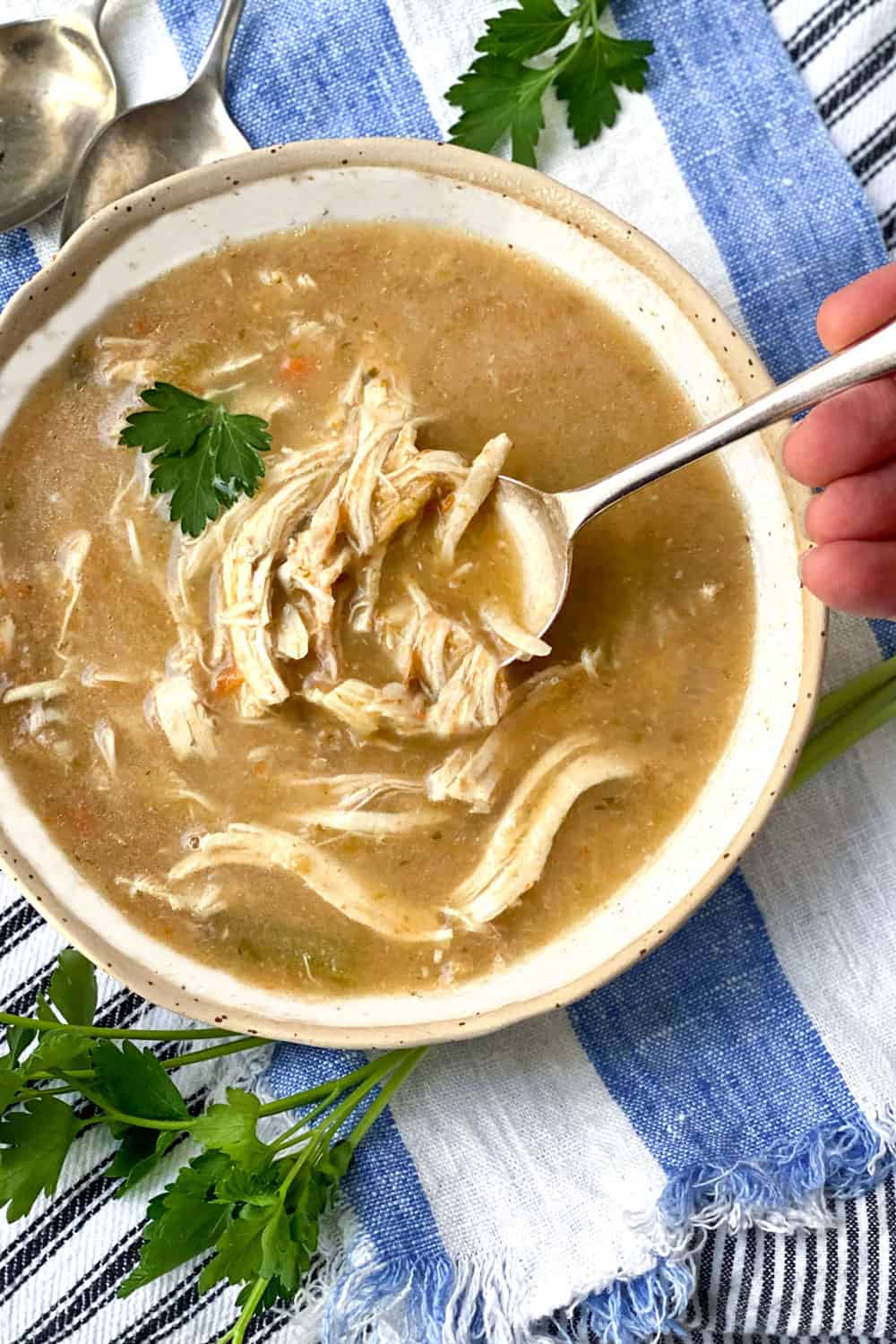Beef Broth for Health: What Makes It a Nutritional Powerhouse?
Beef Broth for Health: What Makes It a Nutritional Powerhouse?
Blog Article
The Ultimate Overview to Enjoying and making Organic Bone Broths in the house
Bone broth has gotten attention for its countless health advantages and culinary convenience. Crafting organic bone brew in the house permits individuals to regulate the top quality of ingredients, ensuring a nourishing result. Understanding the option of bones, crucial flavoring components, and correct cooking strategies is crucial. As the process unravels, one may wonder how to raise their broth beyond the essentials and integrate it right into daily dishes for boosted taste and nutrition.
Understanding the Health And Wellness Conveniences of Bone Brew
Although bone brew has been a staple in different foods for centuries, its health advantages have gotten significant attention in the last few years. Rich in collagen, amino acids, and minerals, bone broth is frequently proclaimed for its possible to support joint health, improve gut feature, and boost skin elasticity. The jelly obtained from prepared bones may aid food digestion and help secure the gut lining, possibly minimizing problems like leaking gut syndrome.Furthermore, the existence of nutrients such as glucosamine and chondroitin may add to minimized inflammation and discomfort alleviation in joints. Furthermore, bone brew is hydrating and can work as a healthy base for stews and soups. Several advocates additionally assert that it improves the immune system, many thanks to its mineral profile. On the whole, the revival of rate of interest in bone brew is connected to its perceived ability to advertise general well-being and assistance different bodily functions.
Picking the Right Bones for Optimum Taste and Nourishment
What elements should one take into consideration when selecting bones for broth prep work? The kind of bones made use of greatly affects both flavor and nutritional value. First, it is crucial to pick bones that consist of a mix of marrow bones, joint bones, and meaningful bones. Marrow bones supply healthy fats and rich flavors, while joint bones add collagen, enhancing the broth's nutritional profile.Additionally, sourcing bones from grass-fed or pasture-raised pets assurances greater quality and more nutrients, as these animals are typically healthier. The quality of the bones is additionally important; selecting bones from neighborhood butchers or farmers' markets can ensure ideal flavor. Bone size matters too; larger bones launch more gelatin, leading to a richer broth. Thinking about the type of animal-- beef, fish, or poultry-- can affect the final preference, enabling for flexible brew options tailored to private preferences.
Crucial Components for a Flavorful Bone Brew

Quality Bone Selection
The structure of a savory bone broth hinges on the careful selection of top notch bones. Sourcing natural, pasture-raised or grass-fed bones is crucial, as these options are more probable to be cost-free from damaging ingredients and supply remarkable nutrients. Varieties such as lamb, beef, or chicken bones each present distinct flavors and health advantages. Bone types, including marrow bones, knuckle bones, and oxtails, contribute jelly and collagen, improving the brew's appearance. Picking bones with a mix of meat and connective tissue can additionally add splendor and depth. Furthermore, choosing bones with visible marrow assures a nutrient-dense broth, boosting the total high quality. Eventually, spending time in high quality bone selection lays the foundation for a beneficial and scrumptious broth.
Fragrant Flavor Boosters
Picking top quality bones establishes the stage for a rich and nutritious bone broth, but it is the addition of fragrant taste enhancers that truly raises the recipe. Active ingredients such as onions, garlic, and carrots not just pass on sweet taste but likewise add deepness to the brew. Fresh herbs like parsley, thyme, and bay leaves add an aromatic note, while flavors such as black peppercorns and cloves introduce warmth and complexity. Furthermore, including a sprinkle of apple cider vinegar can help extract minerals from the bones, enhancing the broth. These flavor enhancers create an unified blend, changing a simple brew right into a mouthwatering structure for stews, sauces, or soups, making it a versatile part in any kind of cooking collection.
Step-by-Step Guide to Making Bone Broth in the house
Creating bone brew in the house can be a gratifying culinary endeavor that boosts both taste and nutrition in numerous dishes. To start, one should pick premium bones, ideally from natural or grass-fed sources. Roasting the bones at 400 ° F for regarding thirty minutes can intensify the flavor. Next off, move the roasted bones to a big pot or slow-moving cooker and cover them with chilly water. Adding a sprinkle of vinegar assists extract minerals from the bones.Include aromatic vegetables like onions, carrots, and celery for included deepness, along with natural herbs and flavors as wanted. Bring the blend to a boil, then lower to a simmer. It is important to let the brew simmer for a minimum of 12 hours, though much longer is preferable for maximum splendor. Stress the brew via a fine-mesh filter and shop it in closed containers, prepared to elevate meals with its healthy essence.
Tips for Perfecting Your Bone Brew Simmer
While simmering bone broth, preserving the best temperature and timing is vital for accomplishing a delicious and rich result. A gentle simmer, preferably between 190 ° F and 210 ° F, aids remove optimum nutrients and tastes without steaming, which can make the broth cloudy. It is advisable to check the pot closely, changing the warmth as necessary to maintain this simmer.Timing is likewise vital; a longer simmer, typically varying from 12 to 48 hours, permits deeper flavor removal and collagen launch. For poultry bones, a 12 to 24-hour simmer suffices, while beef bones take advantage of longer food preparation times.Additionally, skimming any kind of foam or impurities that increase to the surface during the first few hours can enhance the brew's clarity and preference. Finally, making sure the pot is covered during simmering aids to retain dampness and magnify the tastes, making for a much more gratifying output.
Creative Ways to Utilize Bone Broth in Your Food preparation
Including bone broth into numerous recipes elevates both taste and nutritional worth. Cooks and home chefs alike find that making use of bone broth as a base for soups and stews boosts depth and splendor, transforming basic dishes into passionate dishes. It can also be employed in risottos, where the broth changes water, enabling the grains to absorb its full-flavored essence.Additionally, bone brew acts as an excellent food preparation fluid for grains like quinoa or rice, instilling them with nutrients and flavor. For an added twist, it can be utilized in braising meats, causing tender, flavorful outcomes. Also sauces gain from a dash of bone broth, enhancing their taste profile.Moreover, bone brew can be included right into shakes for an unanticipated health boost, providing protein and nutrients without compromising taste. These creative applications display the convenience of bone brew in daily food preparation, making it an important kitchen area staple.
Keeping and Preserving Your Home Made Bone Brew
Correct storage and preservation of homemade bone brew is important for keeping its flavor and dietary advantages. Cold techniques and refrigeration best methods play an important duty in expanding the brew's life span. Recognizing these techniques can assist guarantee that the broth remains risk-free and scrumptious for future usage.

Icing Up Methods Described
Cold methods are crucial for effectively saving and maintaining self-made bone brew, guaranteeing its abundant flavors and nutrients remain intact for future use. To ice up bone broth, it is suggested to let it awesome completely before transferring it to storage containers. Glass containers, silicone molds, or durable freezer bags appropriate choices. When using containers, leave area at the top for expansion throughout freezing. Portioning the broth into smaller quantities enables for very easy thawing and minimizes waste. Tag containers with the day and click for source components for very easy identification. For peak top quality, consume the icy broth within three to 6 months - Beef Broth. Defrosting can be carried out in the fridge or by utilizing a microwave, go right here ensuring that the broth is warmed completely before consumption
Refrigeration Best Practices
While several focus on cold as a method of preservation, refrigeration likewise plays an important duty in saving homemade bone broth effectively. Once cooled down, bone broth must be moved to airtight containers, ensuring marginal air exposure to stop spoilage. It is suggested to cool brew within 2 hours of cooking to preserve its high quality. Usually, homemade bone brew can be saved in the fridge for as much as five days. Labeling containers with dates can aid track quality. For peak flavor and safety, brew must be reheated to a moving boil prior to consumption. If longer storage is needed, freezing remains an excellent alternative, however appropriate refrigeration practices guarantee that bone broth continues to be tasty and healthy for short-term usage.
Often Asked Concerns
Can I Use Frozen Bones for Making Bone Broth?
The question of making use of icy bones for bone brew emerges often (Beef Broth). Experts agree that frozen bones can be made use of efficiently, however they ought to be thawed prior to food preparation to ensure excellent taste and nutrient removal
The Length Of Time Can I Store Homemade Bone Brew?

Is It Safe to Reheat Bone Broth Numerous Times?
Reheating bone broth multiple times can present safety and security problems - Bone Broth Delivery. Each reheating cycle increases the danger of bacterial development. It is suggested to reheat just as soon as and store any leftovers promptly to ensure safety and quality
Can I Add Vegetables to the Brew for Flavor?
Including vegetables to brew enhances taste and dietary worth. Common choices consist of carrots, onions, and celery. The vegetables infuse their essence into the brew, creating a richer and much more mouthwatering end product.
What's the Finest Method to Thaw Frozen Bone Broth?
To defrost frozen bone brew, one can place it in the refrigerator over night, make use of a microwave on low warm, or immerse the sealed container in warm water, ensuring also defrosting without endangering flavor or nutrients. It is essential to select bones that consist of a mix of marrow bones, joint bones, and weighty bones. Marrow bones offer healthy and balanced fats and abundant tastes, while joint bones add collagen, boosting the brew's nutritional profile.Additionally, sourcing bones from grass-fed or pasture-raised pets guarantees higher quality and even more nutrients, as these animals are visit the site usually much healthier. Bone kinds, including marrow bones, knuckle bones, and oxtails, contribute gelatin and collagen, enhancing the brew's appearance. Choosing high-quality bones sets the stage for a abundant and nourishing bone brew, but it is the addition of fragrant taste enhancers that really boosts the recipe. Also sauces benefit from a splash of bone broth, improving their taste profile.Moreover, bone broth can be included right into healthy smoothies for an unforeseen health and wellness boost, supplying healthy protein and nutrients without compromising taste.
Report this page